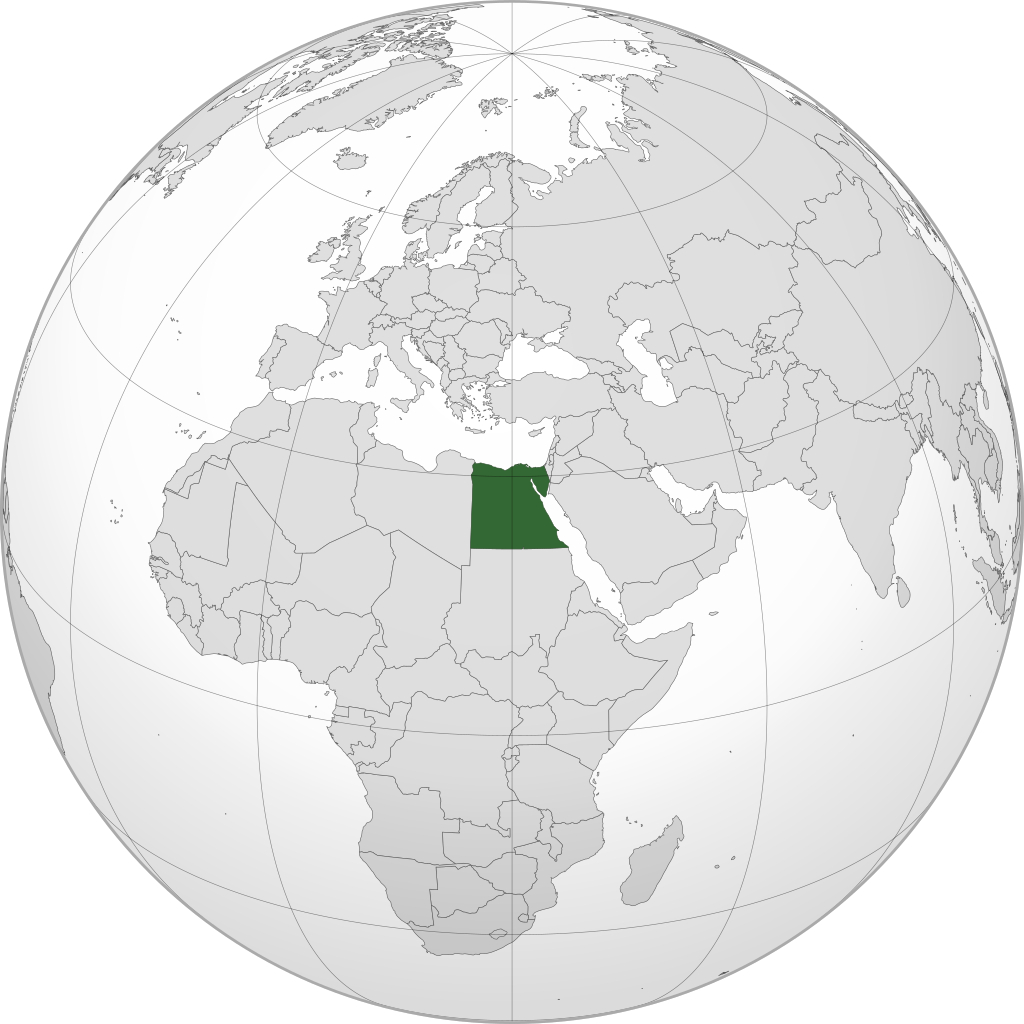More languages
More actions
MiladCabral (talk | contribs) (Map) Tag: Visual edit |
No edit summary Tag: Visual edit |
||
| Line 1: | Line 1: | ||
{{Infobox country|name=Arab Republic of Egypt|native_name=جمهورية مصر العربية|image_flag=Flag of Egypt.svg|image_coat=Coat of arms of Egypt.svg|capital=[[Cairo]]|largest_city=[[Cairo]]|mode_of_production=[[Capitalism]]|government_type=Unitary semi-presidential republic|image_map=Egypt | {{Infobox country|name=Arab Republic of Egypt|native_name=جمهورية مصر العربية|image_flag=Flag of Egypt.svg|image_coat=Coat of arms of Egypt.svg|capital=[[Cairo]]|largest_city=[[Cairo]]|mode_of_production=[[Capitalism]]|government_type=Unitary semi-presidential republic|image_map=Egypt map.png|map_width=260|official_languages=Arabic|national_languages=Egyptian Arabic|area_km2=1,010,408|population_estimate=102,674,145|population_estimate_year=2021}} | ||
'''Egypt''', (مصر) officially known and recognized as the '''Arab Republic Egypt''' (جمهورية مصر العربية), is a transcontinental (<nowiki>''Eurafrasian''</nowiki>), nation in the North African, and Western Asian Region of Africa, and Asia. | '''Egypt''', (مصر) officially known and recognized as the '''Arab Republic Egypt''' (جمهورية مصر العربية), is a transcontinental (<nowiki>''Eurafrasian''</nowiki>), nation in the North African, and Western Asian Region of Africa, and Asia. | ||
Revision as of 05:08, 21 May 2023
| Arab Republic of Egypt جمهورية مصر العربية | |
|---|---|
 | |
| Capital and largest city | Cairo |
| Official languages | Arabic |
| Recognised national languages | Egyptian Arabic |
| Dominant mode of production | Capitalism |
| Government | Unitary semi-presidential republic |
| Area | |
• Total | 1,010,408 km² |
| Population | |
• 2021 estimate | 102,674,145 |
Egypt, (مصر) officially known and recognized as the Arab Republic Egypt (جمهورية مصر العربية), is a transcontinental (''Eurafrasian''), nation in the North African, and Western Asian Region of Africa, and Asia.
Geography
Egypt's natural borders include the Red Sea, and the Aqaba Gulf, which forms the Sinai Peninsula. The country operates the Suez Canal, which links the Mediterranean to the Indian Ocean via the Red Sea. Egypt borders Libya to the west, Sudan to the south, all sharing a tri point border at the Hassanein Plateau. Other areas include the Hala'ib Triangle, which both Sudan and Egypt have a little dispute over, which covers the Elba National Park as well as the administer town of Hala'ib, a fact which both countries ''de facto'' run the region. The Bir Tawil Trapezoid is also a ''disputed'' spill of land, that both countries neither claim. In addition to disputes, Saudi Arabia also lays claim to the Tiren and Sanafir Islands, off the coast of the Red Sea. About 90%+ of the country lives on 5.5% of the country in the north region of the Nile River Delta. Egypt contains a lot of eroded rock formations, extinct volcano calderas, plateaus, mountains, oasis, sand dunes, as well as several Wadis. The country geographically is settled in the incredibly arid western Saharan and Libyan deserts, of northern Africa. With the exclusion of the Sinai Peninsula and its snowcapped mountains and average rainfall, the rest of the country rarely receives precipitation, with the rest of the country averaging around 1 inch of rain each year (2.54 cm). Landscapes like the Al-Farrafrah white desert, are of example. The most recognizable, and most distinguishable asset of the Egyptian nation, the Nile River. As the longest river in the world, at over 6.600 kms, flowing north, draining into the Mediterranean. The river has for eons, and millennia, supplied, and nourished the lands around the Egypt and its insanely arid, and dry deserts, to cultivate food, and vitalize the increasing population, therefore creating the world's first major, and early civilizations. Egyptians have rare access to fresh water which is irrigated, and has in return made the nation, the biggest cultivator of dates, and artichokes. The Nile in the south is the famous Nasser Reservoir, which was created by one of the largest dams in the world, constructed in 1971, to control floods.


